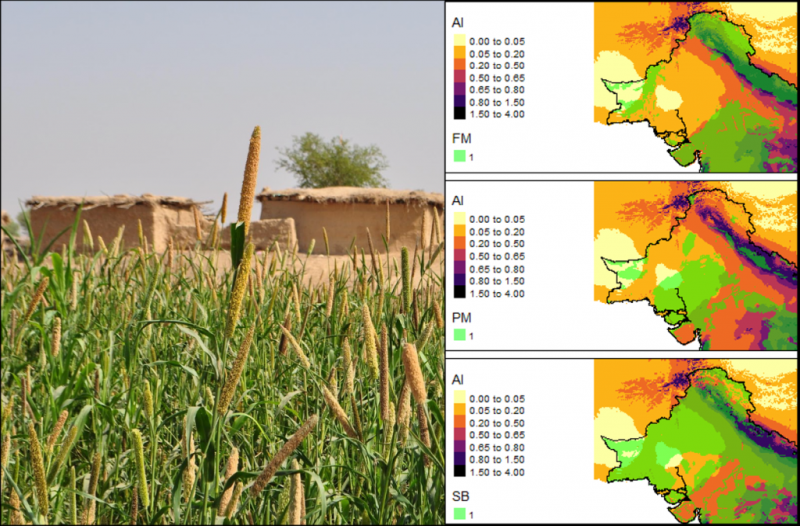Seminar on Wednesday 6 October 2021
Published: 3 October 2021
Carla Lancelotti (Universitat Pompeu Fabra) on Past, present and future of smart crops: An ethnographic and modelling approach to mapping long-term millets cultivation in drylands

Wednesday 6 October 2021 at 4pm BST
Carla Lancelotti (Universitat Pompeu Fabra)
Past, present and future of smart crops: An ethnographic and modelling approach to mapping long-term millets cultivation in drylands
Drylands currently cover c. 46.2% of Earth’s surface and are home to 3 billion people. Even though recent reports indicate that the total surface of drylands will not increase due to climate change, desertification -land degradation in drylands- will. Sustainable Land Management (SLM) practices in drylands were found to increase agricultural productivity and contribute to climate change adaptation with mitigation co-benefits. Some of these practices include crop diversification and adoption of drought-resilient ecologically appropriate plants and the adoption of improved irrigation techniques (e.g., drip irrigation) and moisture conservation methods (e.g., rainwater harvesting using indigenous and local practices).
The contribution of Indigenous Local Knowledge (ILK) to enhance resilience and desertification mitigation is now fully established. However, most of the crop and land use models in use, do not take into account ILK. Using published and novel ethnographic data on cultivation practices of millets, we present here models that show the interplay between ILK and Academic Ecological Knowledge (AEK). The aim of this research is to show how rainfed agriculture is practised much more often, and in much more suitable areas, than reported. Ultimately, we aim to apply our models of potential distribution of millets cultivation to archaeological reconstructions in order to obtain a better understanding of long-term land use in drylands. Here we present an example based on the Indus Valley Civilisation (South Asia, 3rd millennium BCE).
Recent archaeological and paleoenvironmental data have made increasingly clearer that the Indus Valley Civilisation occupied a vast geographical area characterised by different ecological niches. According to the most recent archaeobotanical research, various and locally adapted crop packages were in use in the Indus Valley Civilisation. However, archaeobotanical analysis can still only give us a partial view of what was cultivated at some specific sites, thus limiting our understanding of past land use. In this case the application of our ethnography-based models can assist in creating diverse scenarios and guide archaeobotanical and archaeological investigations.
First published: 3 October 2021
<< 2021
Check our other seminars here: Seminar Series 2021/22

